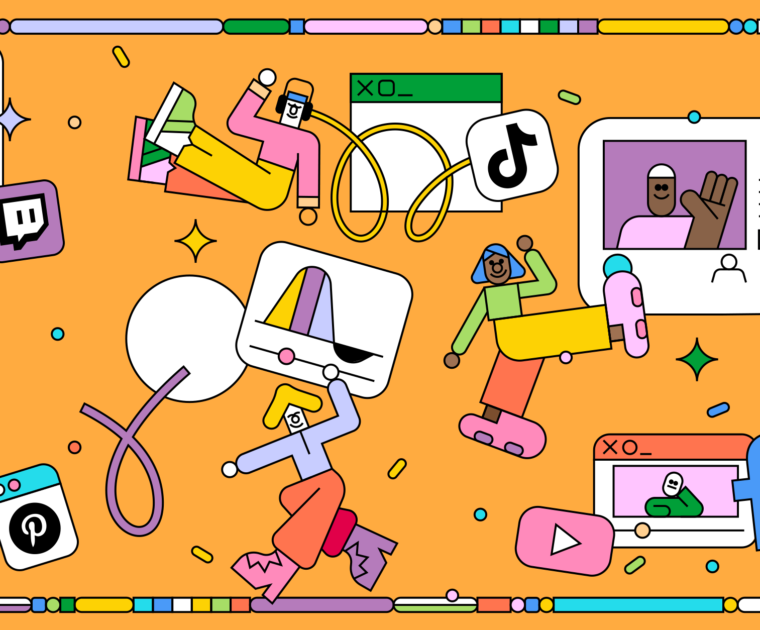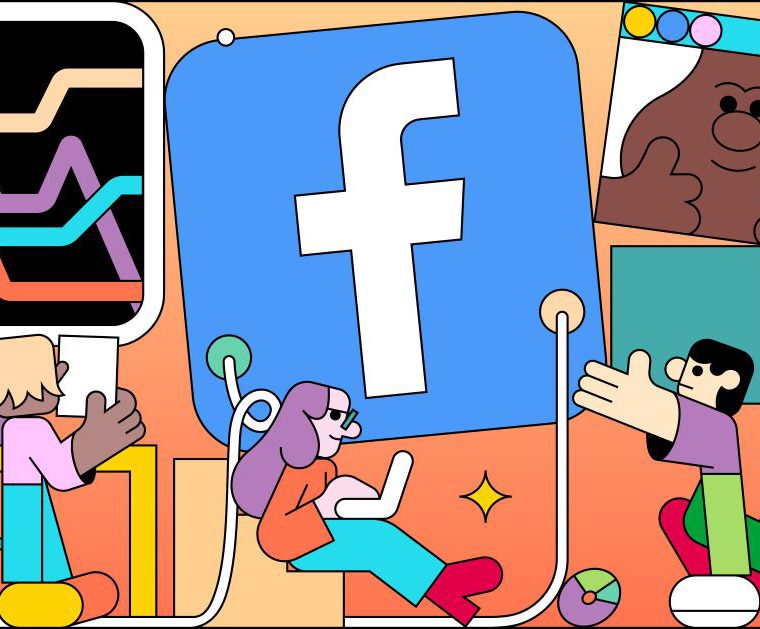Over the years, we’ve fielded tons of questions about influencer marketing, influencer rates, running campaigns, hiring influencers. Without a doubt, one of THE most common questions brands want to know is how much they should be paying influencer partners and how to calculate influencer prices.
How much do influencers cost anyway? How much do creators charge for Instagram influencer marketing compared to TikTok marketing? YouTube compared to blog posts (and the Pinterest content that comes with those blog posts)? What’s the standard influencer marketing rate? Can you at least give me a ballpark of what it’ll cost to bring in Instagram influencers to promote our big sale?
Yes and no. And that’s not a cop-out.
Well, let’s start with this little truth bomb: There isn’t really a standard rate sheet that covers all influencers. Trying to come up with a one-size-fits-all influencer rate is like trying to come up with a one-size-fits-all movie rate for every actor on the planet.
No matter how you slice it, you’re not going to get Daniel Craig for the same price you would get your friend Craig Daniels (whose credits to date include three college plays and being a hometown hero because he stars in the commercials for the local sandwich shop).
In the same way, trying to pre-price influencers for the sake of fitting them in a box is kinda pointless. Don’t get me wrong – there are ways of calculating influencer rates to set up the budget for your campaign. Absolutely.
But, much like the Craig Daniels-Daniel Craig analogy, your budget will be a pretty keen indicator of the types of influencers to which you’ll have access.

How Many Followers Do You Need to Be Considered an Influencer Anyway?
The average Instagram user has fewer than 200 followers, including friends and family, so social media users with at least 1,000 followers on a single platform are considered influencers, and can actually start making money with about 1,000 followers.
(FYI if you’re interested, Ryan Kucey, one of our Brand Partnerships Managers, has a Udemy course for influencers who want to start making money with as little as 1,000 followers.)
I won’t get knee-deep into definitions in this post because we actually have a post on influencer tiers that defines each of the five levels of influencers (and has some pretty cool infographics) and actually gives estimations on how many “influencers” there really are.
But just to make sure we’re all on the same page, when we say influencer, we’re referring to social media users who meet the criteria for one of the following five tiers:
- Nano-influencers: A nano-influencer is any deliberate influencer (because sometimes people are just great on social and organically grow to nano status without actually having any intention of being an influencer) with followers that range from 1,000 to 5,000.
- Micro influencers: A micro influencer has a larger following, and typically falls at a pretty reasonable price point. They’re still small enough to have a niche following but large enough to move the needle for brands running awareness and UGC campaigns. Their audiences range from 5,000 to 50,000 followers.
- Mid-tier influencers: Mid-tier influencers are the sweet spot for a lot of brands, with between 50,000 and 300,000 followers. Social media influencers and even some celebs fall into this range.
- Macro influencers: Macro influencers are great for getting the word out about sales, product launches, rebrands… all kinds of goals that revolve around notifying as many people as possible in the shortest amount of time. They have a follower count anywhere from 300,000 to 1,000,000.
- Mega influencers: These are influencers with more than one million followers, and often includes celebrities and influencers who have gained a measure of celebrity by the sheer size of their following, usually popular amongst celebrities with followers of 1,000,000 and above.
This wasn’t just an exercise in taking up space, because when it comes to setting influencer rates, the size of an influencer’s audience matters since it helps drive total engagement numbers. We’ll get more into that in a sec.

Influencers Set Their Fees. Agencies Calculate Their Fees. Then the Two Negotiate
Every influencer sets his or her own rates. But every influencer marketing agency probably has a way of projecting what an influencer will charge for participating in a campaign. And that’s the only thing that’s standard about the process.
The influencer rates hardly ever match what the agency has on paper though. But you can consider each one a starting point.
Let me go on record as saying there is no standard influencer rate for a post, no matter which social channels you’re using to run your influencer campaign. Influencer pay can range anywhere from $5 for a nano influencer with decent [phone] photography skills to six-figure contracts for a single post or 15-second video from a social media celebrity.
Some influencers will undercharge because they like your brand, or they support your cause, or they simply don’t realize their value as an influencer.
Last year, we polled influencers and found that 30 percent of them would reduce their fees or waive them altogether if asked to create content for a political candidate that they support. Thirty percent!
On the flipside, we’ve spoken with influencers who wanted us to pay them two grand a week in residuals just for reusing campaign content.
👀
And that’s after they were already paid a competitive rate for participating in the campaign in the first place!
So, you can either be Sanders-level outraged after every DM or you can just accept the fact that influencer selection is a bit more complex than we like to admit.

The Most Common Influencer Marketing Pricing Models
There are a couple of different payment structures you can implement, depending on the influencer and campaign.
Pay-per-post is, by far, one of the most commonly-used influencer marketing pricing models for campaign activations. Most of the time when someone is asking how much influencers charge, they want to know the cost per post, which can range anywhere from being enough money to grab lunch at Subway or enough money to franchise a Subway of your own.
Performance-based payments are another option. Brands pay influencers for the clicks they generate, the actions they get their audience to take, and/or the conversions they drive.
Freebies. We’ve all heard stories of this, right? Where a brand offers free products in exchange for a post… which usually only works with smaller influencers and is only really a sexy offer if the influencer was in the market for the brand’s thing anyway – like a mom-to-be being offered a suped-up stroller that pushes itself for a post. (Side note: Love for the littles aside, strollers and safety seats can get really pricey really fast).
Travel packages are also really popular freebies and much-ballyhooed in the world of influencers. Who wouldn’t want to reach such an elite status that the folks at Disney actually give you a free vacay just to talk up the teacups ride.

How Much Do Influencers Charge for Marketing?
A general rule of thumb is to consider your campaign goals and the ROI you want to see with the campaign before you even start the influencer selection process. The ROI of your campaign depends on you being able to reach your target audiences with the right message at the right time. The right influencer partner will help you do that
You’re going to have a starting point, and you may even have expectations set. Knowing what you need from an influencer and setting a budget before doing any influencer outreach out into the influencer marketing world can help to keep costs down.
But, if you begin to find your numbers are very different from what you’re being quoted by the influencers themselves, you may be overlooking some of the ore important factors that affect influencer rates.
IMPORTANT FACTOR #1: AUDIENCE SIZE
As with most aspects of influencer marketing, follower size makes a big impact on the price an influencer can and will charge. It might go without saying, but let’s go for it anyway – the larger an influencer’s audience, the more the influencer can justifiably charge to create sponsored content.
Follower size is, of course, very important when picking the right influencer. It determines how many people will see your brand in the sponsored post. If your main goal is brand awareness, you’ll want as many potential buyers to see the post as possible.
But, keep in mind that while audience size largely determines an influencer rates follower size is not the best metric for brands when deciding which influencer to choose for partnership opportunities.
That said, you should have a way to qualify an influencer’s followers by checking organic follower growth and their average engagement rate. Weed out those fake influencers. If you don’t you really can’t expect your influencer marketing campaign to deliver the ROI needed to justify the marketing spend. You could end up paying top dollar for bottom-level influence.
You might decide that an influencer with a large following isn’t going to be the best fit for your needs, as you may need access to smaller influencers with niched-down audiences who are ready for more targeted messages.
But, smaller influencers won’t always mean smaller prices, and because a micro influencer’s audience is often more niche-down and streamlined, the smaller audience can be worth more to your business than the bigger influencers and their wide nets. Combine this with the other factors on the list, and you can easily see why pricing structures can be so varied.
IMPORTANT FACTOR #2: AUDIENCE ENGAGEMENT
The simplest answer to the question, “How is influencer value determine in marketing?” is engagement.
No matter how many followers an influencer has, if these followers aren’t interested in an influencer’s content, they won’t engage with it. Without that engagement – that proof that an influencer’s posts are making an impact – an influencer can’t provide any proof to brands of the influence he or she wields.
And honestly, social media platforms will start suppressing the influencer’s content so that it only reaches the people who regularly interact with the content – a supportive aunt, Grandma, PopPop, and a handful of former friends from their hometown.
Not exactly a great investment.
For simplicity’s sake, you can work out an influencer’s engagement rate with this simple equation:
Average post engagement /number of followers x 100
If an influencer has 100k followers, but only receives 10 likes per post, their engagement rate is going to be a measly 0.1%. On the other hand, a smaller influencer with just 5k followers who receives an average of 300 likes a post has an engagement rate of six percent and will be more valuable to your campaign.
Analyzing an influencer’s engagement ratios allows you to compare influencers side-by-side to gauge their actual influence (and thus their value) irrespective of audience size. You want influencers to maintain between two and nine percent quality engagement and positive audience sentiment with each post.
In general, the larger the audience, the smaller the engagement ratio. The Shelf always aims to work with macro-influencers who can maintain at least 1.5 percent engagement and micro-influencers (3K to 100K followers) who have anywhere from two percent to, say… nine percent engagement.
Engagement isn’t just likes though. You should be looking at comments, re-tweets, shares, and any other metrics that show someone actively engaging with an influencer’s content. And these numbers will vary by platform.
It’s also worth checking who the people engaging are to ensure the followers who engage aren’t just other influencers participating in like-for-like campaigns with no real interest in the post being liked. Like-for-like is a common strategy used by influencers to grow their audience and engagement numbers. But these types of Likes fall into the category of vanity metrics, and those rarely convert.
So, be warned: If an influencer’s core source of engagement is other influencers, it may be worth looking elsewhere.

IMPORTANT FACTOR #3: QUALITY CONTENT THAT PEOPLE WANT TO SEE
Amazing content is the name of the game in this business, and brands want (and expect) amazing influencer-generated content that they can reuse across their own branded channels in whatever way they want..
So, it should go without saying that brands will skip over the influencers whose feeds are stained with grammatical errors, bad spelling, low-quality photography, and poorly-edited videos.
Nearly 100 percent of our clients want to work with influencers who produce the type of content that can be reused as-is in the company’s own branded feed and in other advertisements. So, an influencer who produces that level of stunning, scroll-stopping content will typically demand a premium for his or her skill set.
IMPORTANT FACTOR #4: PAST PERFORMANCE
Many successful influencers already have a track record of working with brands before you pop into their DMs. That said, you can inquire about their influencer rates and t find out how effective their previous partnerships were.
Influencers who have been able to achieve good results for previous brands will be more than happy to share that with you – and it means they know what they’re doing.
If they seem reluctant to share this info, that could be a red flag for you. However, if they have lots to say about how they helped the brand, prepare to pay a little extra for their expertise.
Nevertheless, If they haven’t worked with brands before, you can use an influencer marketing platform to pull the data on their posts and the demographics of their audience..
This doesn’t get talked about much, but it’s smart to conduct behavioral analysis of the influencer’s audience.
Pearls clutched?
Well, yeah… because that’s the audience you’re targeting, right? So, that’s the audience you want insights about. The Shelf platform actually started out as an app that analyze shopper behavior, so these types of analyses have been our bread and butter for the last ten years. Having access to audience behavioral data is why our influencer campaigns tend to over-perform.
For brands, it’s always good to analyze as many insights on an influencer’s audience as possible. In addition to how many interactions an influencer is receiving, including those that are visible to the public like website clicks, messages, etc. The bigger the results he or she can get, the more valuable the influencer is to your influencer campaign.
IMPORTANT FACT #5: THE SOCIAL CHANNEL AND CONTENT TYPE
The final thing to consider is the type of content you need, and the platform(s) for which your influencer needs to produce this content. Do you need blog posts, videos, social media posts, images? Different platforms call for different messages, formats, strategies… and budgets.

How Are Influencer Rates Calculated?
We use The Shelf platform to cull data – all the data we can about influencers, their performance, their affinities, their content, and their audience. Then for each new campaign, we drop bits and pieces of that data into a spreadsheet that calculates a ballpark influencer rate based on numbers like total engagement and audience size.
Engagement Rate (ER rate) – This is different for everyone. It is how much interaction (comments, likes, saves, swipe-ups, etc) the influencer gets. The industry standard is around 1.5% . An influencer’s ability to get their followers to take an action is what makes them valuable, so looping in influencers with higher engagement rates could contribute to higher influencer marketing costs. The total engagement an influencer drums up over a specific period of time is important for helping you to build that all-important 👉 impartial 👈, numbers-driven influencer rate structure.
Content Rights – This is a major factor in cost, as well. There are tons of different ways an influencer’s content can be used. Most influencers will create multiple pieces of content for a single campaign. Will your brand have access to all of that content in perpetuity? Or will it basically just be posted during the campaign then archived? Most brands will want to be able to reused sponsored content across their own branded channels, which may cost a bit more. The influencer (or the influencer’s agent) will likely negotiate this part.
Photo/Video Quality – As the quality and creativity of a creator increases, so too will the influencer’s rates. Sometimes a campaign calls for outrageously creative content – like mixed media or perspective stuff. Other times a brand may want the campaign content to look like a bunch of different selfies (a lot of ecommerce apparel stores are big on using that selfie vibe across their entire site – makes the site look like they have tons of customers). Either way, if you’re going for content that eventually has to go from camera to Photoshop or another app for major editing, or content that has to be created with a professional team (or the influencer’s big enough to warrant a professional team for all of her content) that will affect the price.
Other platform followings (Facebook, Pinterest, Blog) – Where she will be posting these videos – youtube can be astronomical in cost. We’ve also seen Instagram Videos and IGTV be pricey as

So… How Much Should I Expect to Pay Influencers??
😡 Uh… this is all great info, but how much do influencers make per post??? Well, friend, it depends but here are the most important things to consider:
- How many followers do they have? More followers = higher cost.
- What is their engagement rate like? Higher engagement = higher cost.
- How good is their content? Higher quality = higher cost.
- What form does their content take? More effort = higher cost.
- Have they worked with brands before? Previous success = higher cost.
- What platform are they working on? Different platforms = different costs.
- How many platforms will your campaign be live on? More platforms = higher costs.
Each influencer is different, just like each brand is different, and there is no set scale of payment that we can follow. Despite this, going through the factors mentioned in this article can help you to get an idea of what your budget can afford, and what level of influencer you want (or can afford) to work with.






